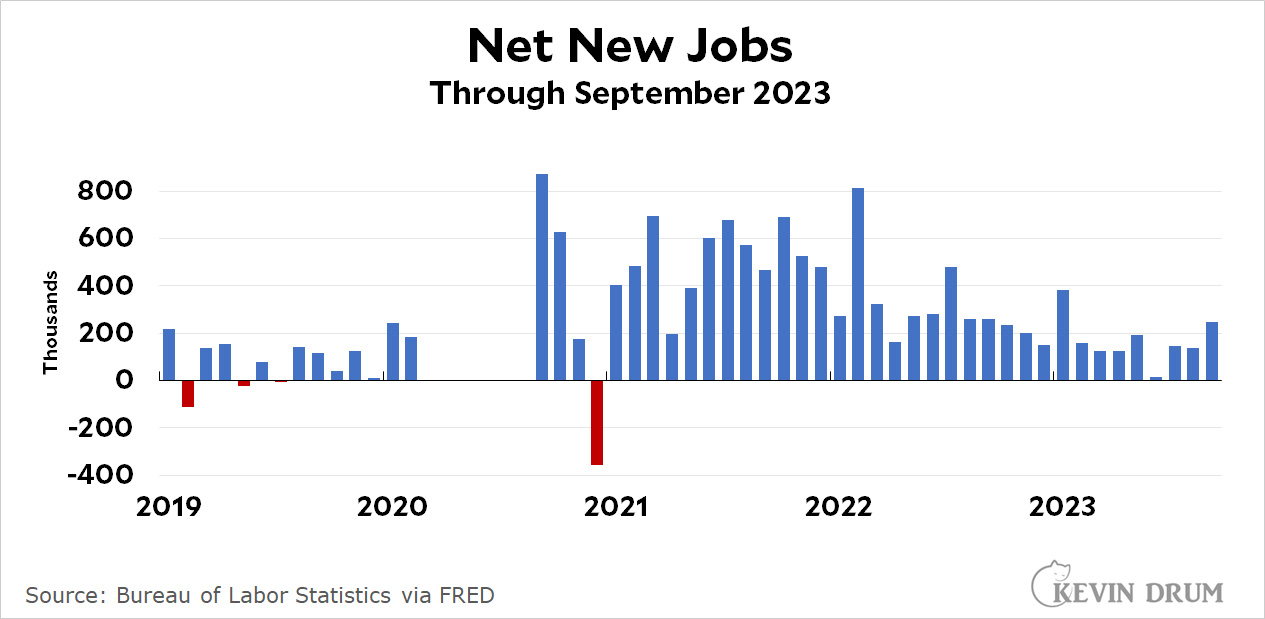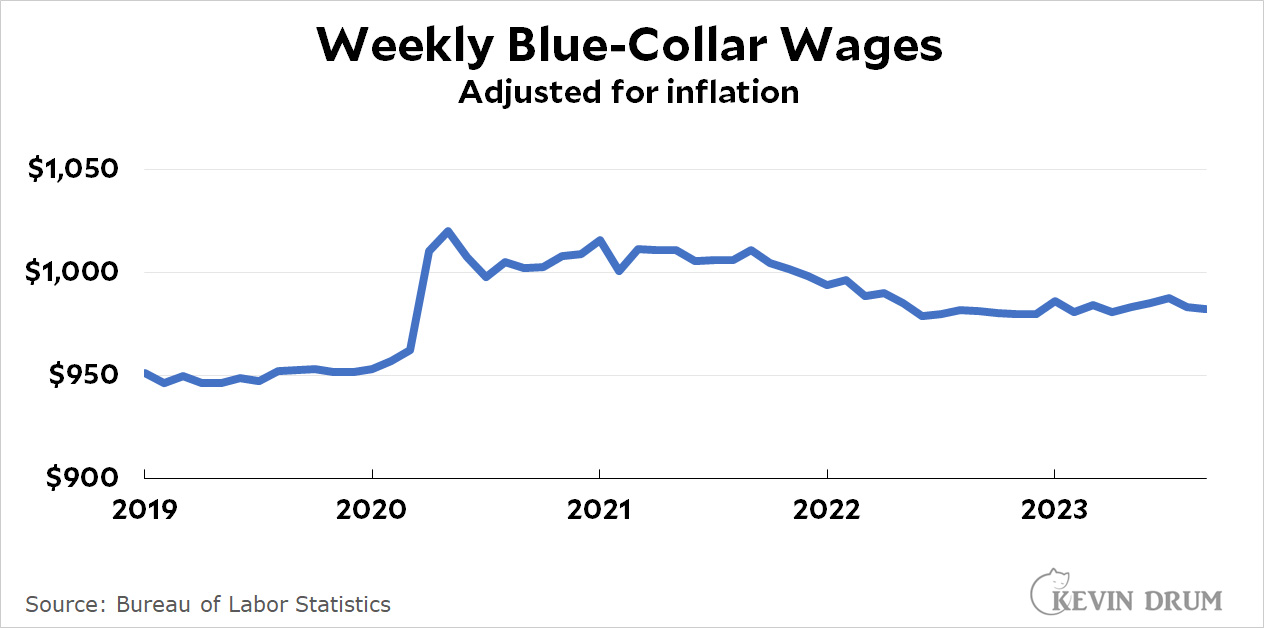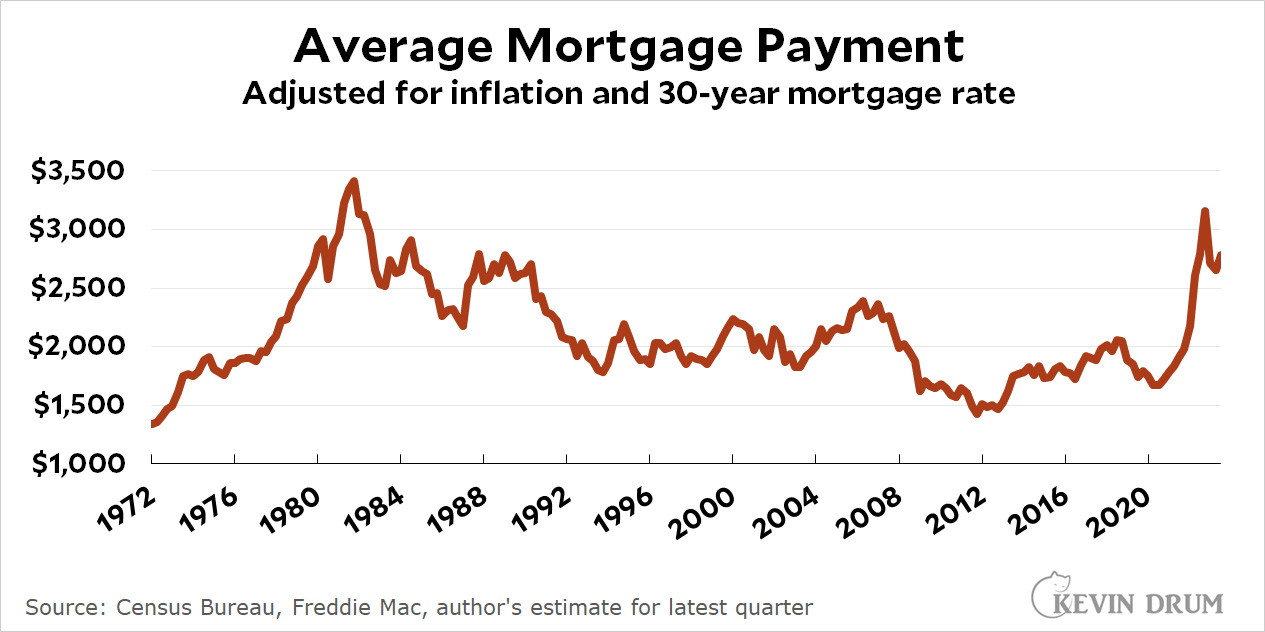I don't have anything in detail to say about today's surprise Hamas attack on Israel. Except this: what are they thinking? Hamas has never won a war against Israel and never will. They must know this. They'll inflict some pain, get crushed, and Gaza will end up even worse off than before. None of this makes any sense at all.
I am now forbidden from taking sleep meds
I turn 65 shortly, and yesterday I got a note from my doctor: I will no longer be allowed to use Ambien. Nor any other sleep med. Why? Because they......
......make you drowsy.
I'm not joking. All sleep meds carry a risk of keeping you drowsy longer than intended, and in old folks that increases the risk of fractures when we get out of bed. Plus there are the very rare but colorful side effects of meds like Ambien, including sleep eating and sleep driving. This practically never happens, but it happens just enough to produce some lawsuits. So no sleep meds for us senior citizens.
The only exception is ultra-low-dose doxepin, a 50-year-old tricyclic antidepressant which, according to clinical studies, does not help you get to sleep. It only keeps you asleep once you finally nod off on your own.
You can probably imagine my excitement about this.
Friday Cat Blogging – 6 October 2023
My sister is back from a vacation to Merrie Olde Englande and she brings catblogging home with her. This is Budge, the resident cat at Norwich Cathedral. My sister reports that Budge is very sociable, though I'm sure he has a hidey hole somewhere when he doesn't want to be disturbed. He has an Instagram feed here.
Fire alarm update
Hey, have Republicans released the video yet of Rep. Jamaal Bowman pulling that fire alarm? Just asking.
Economic reporting is not biased against liberals
This is a common lament on lefty Twitter:
Dear Joe Biden: you are WINNING on policy. You are HELPING voters. But you are LOSING media, and because of that, you are LOSING the hearts and minds of voters. pic.twitter.com/7fjL6xoPo5
— Will Stancil (@whstancil) October 6, 2023
I get the frustration over the headlines, but there's really and truly nothing new or politically biased about this. It's always been the case that good economic news has a cost: namely that the Fed might decide the economy is running too hot and needs to be reined in. Financial reporters (and headline writers) have been reporting this forever.
More generally, the common lefty belief that the media gives identical economic news positive coverage when Rs are in power and negative coverage when Ds are in power—well, let's just say I've seen little credible evidence of this. The examples that get hauled out are nearly always tendentious comparisons of economic conditions that aren't, in fact, the same. Just to name one common error, the same number can be good or bad depending on whether it's going up or down. If unemployment drops from 4.2% to 4%—and the rest of the economy is strong—that's good. Conversely, if it goes up from 3.8% to 4%—and the rest of the economy is mixed—it's bad. This is perfectly reasonable even though unemployment is at 4% in both cases.
There's not really much of a case that financial reporting is biased against Democrats. Or, if there is, let's see the evidence. There's very little literature on the subject, but what there is suggests a slight pro-Democratic bias.
What happened in Artsakh?
Nagorno-Karabakh—better known as Artsakh—is a smallish (100,000 people) Armenian enclave in Azerbaijan. It's long been recognized as Azerbaijani territory, but for many years it's been effectively controlled by Armenia.
Until a couple of weeks ago, that is, when long-simmering conflict in the region ended abruptly with a lightning military takeover by Azerbaijani forces. Within a week, nearly the entire Armenian population had fled.
But did they depart on their own because they didn't want to live under Azerbaijani rule? Or were they forcibly expelled? In the LA Times today, a pair of academics insist on the latter. I read this with interest because I've seen very little evidence one way or the other, but in the end all I got was this:
Forced to surrender, Artsakh President Samvel Shahramanyan signed a decree stating that the republic would “cease to exist” on Jan. 1, 2024. In a matter of days, nearly the entire population had been forcibly displaced. For the first time in thousands of years, Artsakh is effectively absent Armenians.
That was it. An assertion of fact with nothing to back it up. The evidence of forcible displacement was, roughly speaking, just the fact that Azerbaijan and Armenia are historical foes and Azerbaijan is a dictatorship that can't be trusted. Those things are obviously both true, and I certainly wouldn't take Azerbaijan's word for anything. But that still doesn't answer the question of why everyone left. Were they literally forced out of their homes? Or do they simply not want to live under non-Armenian rule?
I don't know, and I'm surprised that we still don't seem to have hard evidence one way or the other. Even Armenia's prime minister said last month that there was "no immediate need for the region’s ethnic Armenians to leave their homes" (according to Al Jazeera's report). And when ethnic Armenians did flee, the Azerbaijani army was very restrained.
I may not be inclined to believe anything Azerbaijan has to say on the subject, but on the other hand there's no evidence of soldiers going door to door and tossing people on the street. Why is it that even now we have so little concrete information about what really happened?
Despite job growth, wages remain flat in 2023
Chart of the day: Net new jobs through September
The American economy gained 336,000 jobs last month. We need 90,000 new jobs just to keep up with population growth, which means that net job growth clocked in at 246,000 jobs. The headline unemployment rate stayed the same at 3.8%.
 This is a nice, strong jobs report. It's not world beating, and job growth remains fairly subdued in general, but it's well above average for the year.
This is a nice, strong jobs report. It's not world beating, and job growth remains fairly subdued in general, but it's well above average for the year.
The household employment data was curiously out of sync with the headline data, showing virtually no growth in anything. It's not usually quite so different, but there's a reason we don't use it as the primary source of jobs data: it's not as reliable as the establishment survey that forms the basis of the headline numbers.
How much is an F worth?
And now for something completely out of the blue. Let us consider the most widely used grading scale in American schools and colleges. It looks like this:
 A straight-A average is a 4.0. A B+ is a 3.5. The lowest grade is an F. Even if you blow off an assignment completely, that's still the worst you can get. Zero. There's no such thing as an F-.
A straight-A average is a 4.0. A B+ is a 3.5. The lowest grade is an F. Even if you blow off an assignment completely, that's still the worst you can get. Zero. There's no such thing as an F-.
Now, just because, let's multiply everything by ten:
 This is exactly the same thing, right? We've just decided to use multiples of ten so we have a little more flexibility between letter grades. Now let's add 50 to everything:
This is exactly the same thing, right? We've just decided to use multiples of ten so we have a little more flexibility between letter grades. Now let's add 50 to everything:
 I hope everyone will agree that we've still changed nothing. An F is now a 50, but it's still the same distance from a D as a D is from a C. This should look familiar since it's the numerical scale most commonly used in schools.
I hope everyone will agree that we've still changed nothing. An F is now a 50, but it's still the same distance from a D as a D is from a C. This should look familiar since it's the numerical scale most commonly used in schools.
But not quite. What we actually do in real life looks like this:
 Whoa! We just arbitrarily added 50 points below an F. Does this make any sense? Why did we take the original scale and basically add a whole bunch of space below the old zero point? Hmmm.
Whoa! We just arbitrarily added 50 points below an F. Does this make any sense? Why did we take the original scale and basically add a whole bunch of space below the old zero point? Hmmm.
Now then: What's my point? Why did I write this? It's a response to a piece in the New York Times about alleged gaming of the grading system in some high schools:
What's not helping? The policies many school districts are adopting that make it nearly impossible for low-performing students to fail — they have a grading floor under them, they know it, and that allows them to game the system.
Several teachers whom I spoke with or who responded to my questionnaire mentioned policies stating that students cannot get lower than a 50 percent on any assignment, even if the work was never done, in some cases. A teacher from Chapel Hill, N.C., who filled in the questionnaire’s “name” field with “No, no, no,” said the 50 percent floor and “NO attendance enforcement” leads to a scenario where “we get students who skip over 100 days, have a 50 percent, complete a couple of assignments to tip over into 59.5 percent and then pass.”
At first this sounded outrageous. But then I realized I was just having a knee-jerk response to a change in the way things have always been done. Upon reflection, I realized that the way things have always been done makes no sense. On the scale we started with, which goes from 0 to 4, there's a gap of 1 unit between an F and a D. But then we do a bit of scaling and decide that a real F is a zero and a D is 60. Suddenly there are six units between an F and a D compared to one unit between all the other grades.
So who's gaming who?



